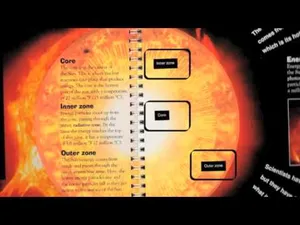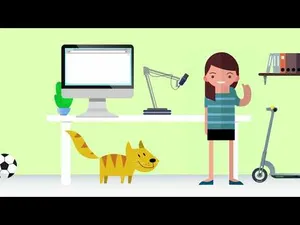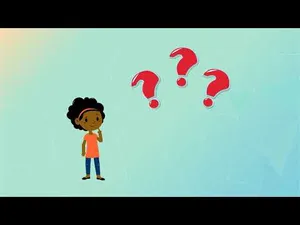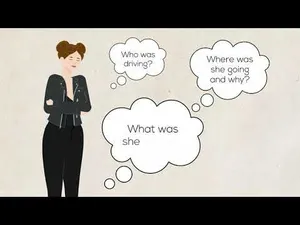Describing the Relationship of Events: Sequencing
Logical Connections
RI.3.3 and 2 more
Prefixes and Suffixes Introduction
Common Prefixes and Suffixes
RF.3.3.a and 1 more
Using Context Clues
Context Clues
RI.3.4 and 1 more
Finding Support for an Author's Point
Find Evidence in the Text
RI.2.8 and 1 more
Using Illustrations to Understand Text
Use Pictures to Understand Words
RI.3.5 and 1 more
Asking & Answering Questions
Asking and Answering Questions
RI.3.1
Introduction to Reading with Fluency
Read with Fluency
RF.3.4.b
Intro to Structure in Stories, Plays, and Poems
Identifying Text Structure
RL.3.5
Intro to Connecting Ideas in Informational Text
Connecting Story Details
RI.3.3
Compare and Contrast Books in a Series
Compare, Contrast Series Books
RL.3.9
Reading Literature - Using Illustrations
Illustrations Support Text
RL.3.7
Reading Literature - Point of View
Point of View
RL.3.6
What is Nonliteral Language?
Literal vs Non-literal Language
RL.3.4
Read and Write Sight Words
Reading Sight Words
RF.3.3.d
Using Illustrations to Understand a Text
Use Pictures to Understand Words
RI.3.7
Asking & Answering Questions About A Text
Asking and Answering Questions
RI.3.1
Recounting Stories and Finding Their Lesson
Determine Message, Lesson, Moral
RL.3.2
Comparing and Contrasting Two Texts on the Same Subject
Compare and Contrast
RI.3.9
Ask and Answer Questions about a Story
Understanding the Text
RL.3.1
Explaining Main Ideas & Key Details
Main Idea and Key Details
RI.3.2
Reading Activities and Teaching Resources for 3rd Grade
"The fool doth think he is wise, but the wise man knows himself to be a fool." Thanks a lot, Shakespeare! Poetry with purpose is one of our favorite topics covered at this stage of development.
Developing readers encounter new milestones in third grade, including the ability to comprehend a variety of literature and text types, make deeper connections while reading, and decode larger and more complex words. This is the final year for foundational reading standards in eSpark and most basic phonics work has been wrapped up at this point. Fluency is taking center stage, as students work with on-level text and continuously challenge themselves to grow. Language and grammar instruction expands to include more tenses, irregular words, abstract words, and complex sentences.
For a more comprehensive look at eSpark's standards-aligned third grade reading teaching resources, check out the breakdown of covered domains and the skills students will be working on here:
Some of the skills students will master in eSpark include:
Reading Literature
- Ask and answer questions to demonstrate understanding, referring explicitly to the text as the basis for answers.
- Recount stories, including fables, folktales, and myths from diverse cultures; determine the central message, lesson, or moral and explain how it is conveyed.
- Describe characters in a story via traits, motivations, or feelings, and explain how their actions contribute to events.
- Determine the meaning of words and phrases, distinguishing literal from nonliteral language (metaphors, similies, analogies, etc...).
- Refer to parts of stories, dramas, and poems; e.g., chapter, scene, and stanza.
- Distinguish their own point of view from that of the narrator or characters.
- Explain how specific aspects of a text's illustrations contribute to what is conveyed by words.
- Compare and contrast themes, settings, and plots of stories written by the same author about the same or similar characters (series).
- Independently and proficiently read and comprehend literature, including stories, dramas, and poetry, at the high end of the grades 2-3 text complexity band.
Reading Informational
- Ask and answer questions to demonstrate understanding, referring explicitly to the text as the basis for answers.
- Determine the main idea of a text; recount key details and explain how they support the main idea.
- Describe the relationship between a series of historical events, scientific ideas or concepts, or steps in technical procedures in a text, using language that pertains to time, sequence, and cause/effect.
- Determine the meaning of general academic and domain-specific words and phrases in a text relevant to a 3rd grade topic or subject.
- Use text features and search tools (key words, sidebars, hyperlinks, etc...) to efficiently locate information relevant to a given topic.
- Distinguish their own point of view from that of the author.
- Use information gained from illustrations and the words in the text to demonstrate understanding
- Describe the logical connection between particular sentences and paragraphs in a text.
- Compare and contrast the most important points and key details in two texts on the same topic.
- Independently and proficiently read and comprehend informational texts, including history/social studies, science, and technical texts, at the high end of the grades 2-3 text complexity band.
Reading Foundational
- Identify and know the meaning of the most common prefixes and derivational suffixes.
- Read 3rd grade sight words.
- Read 3rd grade text with purpose and understanding.
eSpark is truly unique in the world of online learning. Our holistic, student-centered approach blends the proven benefits of play-based learning with systematic, explicit, and direct instruction. It’s proof that learning can be fun, personalized, and effective, all at once!
eSpark meets the criteria for evidence-based interventions under ESSA guidelines, and has been proven in multiple studies to improve student performance in math and reading.
When you sign up for an eSpark account, your students experience these activities via adaptive, differentiated independent pathways and teacher-driven small group assignments. Teachers also have access to detailed usage and progress reports with valuable insights into standards mastery, student growth trends, and intervention opportunities.
With the addition of the game-changing Choice Texts for the 2023-2024 school year, eSpark has cemented its status as the most loved supplemental instruction option for students and teachers alike. Claim your free account today and see the difference for yourself!





















